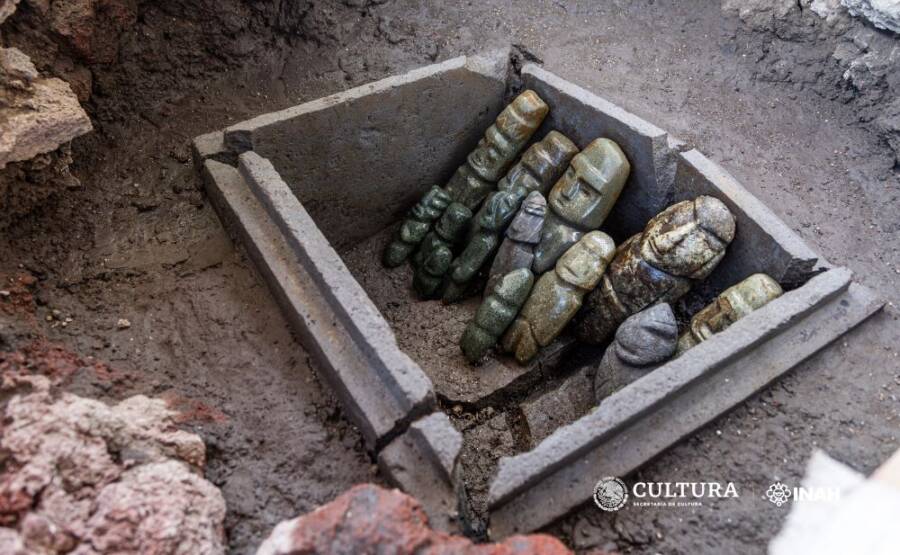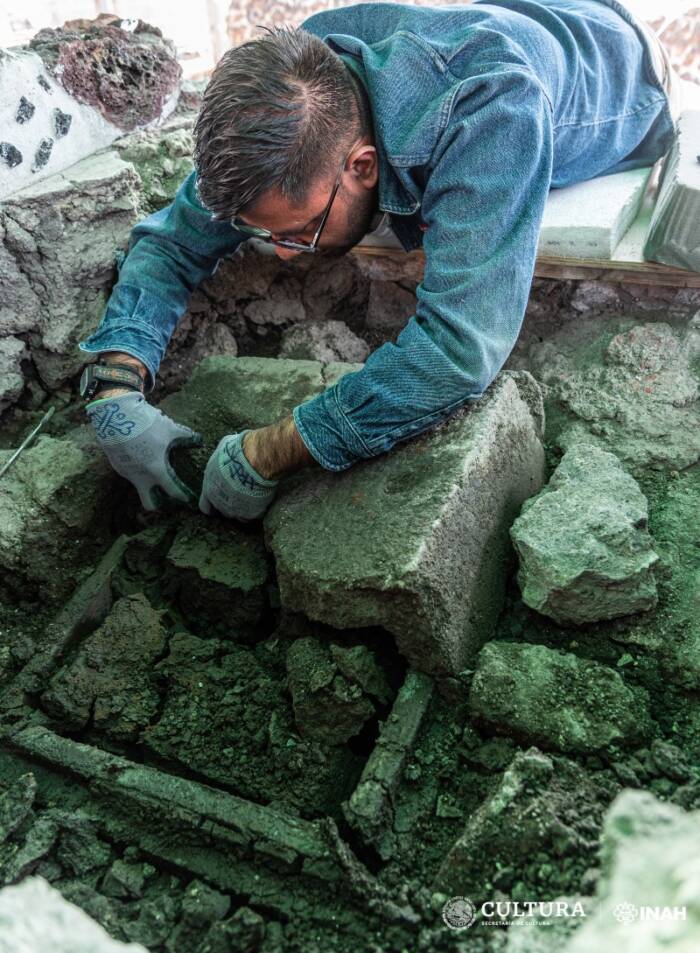Archaeologists discovered the figures in a hidden cache buried at the Templo Mayor in Mexico City, the main temple of what was once the Aztec capital of Tenochtitlan.
Templo Mayor ProjectThe Mezcala - trend stone statues recovered as part of the Templo Mayor Project .
A mathematical group of archaeologists in Mexico City have unearth a small cache of human - like stone carvings , in all likelihood used by the Aztecs as offerings to their gods .
The squad discovered the carvings inside a Lucy Stone thorax at the web site of the formerTemplo Mayor , the main tabernacle of Tenochtitlan , the Das Kapital of the Aztec Empire , according to atranslated affirmation .

Templo Mayor ProjectThe Mezcala-style stone statues recovered as part of the Templo Mayor Project.
In all , there were 15 stone simulacrum discovered — 14 render men and a smaller one present a woman . The large of the Lucy Stone statues beat just under a base grandiloquent , with the smallest standing just over one inch tall .
Each was carve from gullible metamorphic stones , sharing feature characteristic of the Mezcala style , a Mesoamerican acculturation that once inhabited the area of Guerrero .
The Aztecs seize much of the area in the fourth dimension of Moctezuma Ilhuicamina , who ruled between 1440 and 1469 C.E. It was Ilhuicamina ’s decree that treasures be buried in the “ Sacred Precinct of Tenochtitlan ” to think over the wealth of conquered dominion .

Templo Mayor ProjectThe figures were buried in a container alongside several other objects in what researchers think was an offering to Tlaloc, the god of rain.
This has led researchers to think that the Aztecs valuate Mezcala sculptures quite highly .
“ This means that , when the Mexicas ( Aztecs ) subdued those people , the figurines were already on-key relic , some of them more than 1,000 geezerhood old , and presumably they serve as furor image , which they appropriated as booty of war , ” explained archaeologist Leonardo López Luján .
grant to theMetropolitan Museum of Art , the Mezcala were renowned for their stone works and architectural example , which they produce for intimately a thousand age beginning as former as 500 B.C.E.
Templo Mayor ProjectThe form were buried in a container alongside several other object in what researchers recall was an offering to Tlaloc , the deity of rain .
Many Mezcala architectural role model are usually referred to as temples , but as the Met suggests , some may have been multifunctional . Certain stone objects station in grave accent , for example , were believed to serve as entrances to the spirit mankind , or as habitation for the deceased .
The Mezcala also array with the Mesoamerican tradition of repurposing or re - carving stone objects — a trend that the Aztecs may have continue with their looted goodness .
Further evidence suggests that the Aztecs later re - used the Mezcala statue for their own religious ceremonial — with facial pigment apply to one figure meant to look like the rainwater god Tlaloc .
Alongside the statue , archaeologists recovered two rattlesnake - shaped earring , 137 beads of various unripe metamorphic Stone , ocean sand , and 1,942 chalky materials , admit shells , snail , and coral . The whole stash was apply the designation of “ offer 186 ” by archaeologists .
This breakthrough was in part revolutionise by investigator ’ desire to substantiate a pattern found in other offerings — 18 , 19 , and 97 — which were also found at the Templo Mayor web site . Each was a similar rock chest , lay to rest as dedicatory offer under monumental snake in the grass top dog .
“ In classical Nahuatl , these chests were known astepetlacalli – fromtetl , ‘ stone , ’ andpetlacalli , ‘ petate box , ' ” López Luján said . “ In their homes , the [ Aztecs ] used to keep their most precious property in petate chest of drawers , such as hunky-dory feather , jewellery or cotton garment , and if we see it from the Templo Mayor … we can imagine the priests storing in these ‘ stone flask ’ the quintessential symbols of H2O and rankness : sculptures of the pelting idol , green stone beads , shell , and snails . ”
The Templo Mayor project is still underway , and archaeologists trust there are further consecration offering to be found at the site . The projection ’s next step is to request authority from the National Institute of Anthropology and account to remove a snake forefront statue on the Templo Mayor ’s N side so that they may search beneath its base for further caches .
After reading about this novel discovery in Mexico City , read about when archeologist unearthed119 skullsat an Aztec tabernacle . Or , read the gory legend ofHuitzilopochtli , one of the most authoritative graven image in the Aztec Empire .